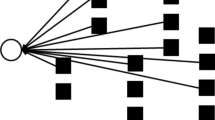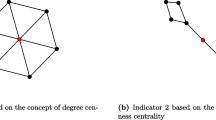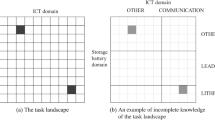Abstract
Despite the enthusiasm for technology convergence seen over the last decade in society and the broad consensus on its considerable impact, there is neither any substantive evidence that technology convergence occurs overall nor any objective explanation of the domains where it may be found. By using patents filed to the KIPO from 1996 to 2010 and demonstrating trends based on co-classification analysis at the entire technology domain level, we elucidate the extent of technology convergence in a technological innovation system and its change in status over time. Furthermore, our paper uses network analysis based on patent data to identify the occurrence of technology convergence in terms of its technological domains. Our findings are as follows: (1) the diffusion of technology convergence has been ongoing since the early 2000s; (2) technology convergence is evolving into a more complex and heterogeneous form; (3) convergent technology has a wider scope but requires more effort to develop than does non-convergent technology; and (4) evidence for the strong consistency of converged domains over time exists. These results support the numerous initiatives of governments and firms to promote technology convergence and illustrate the future form of technology convergence.











Similar content being viewed by others
Notes
Technological performance can eventually lead either to creative destruction or to the reinforcement of the position of industry leaders, depending on whether technological innovation devalues their complementary assets (Tripsas 1997); therefore, we carefully discern the relationship between technology convergence and existing complementary assets of industry leaders when it comes to the potential impact of technology convergence on structural change in industry.
Adapted from Karvonen and Kässi (2013).
Even the combination of the previously mentioned methods has been attempted (Palmer 1999).
Generally, scholars tend to use the subject categories of either Web of Science or Scopus (Wagner et al. 2011).
Curran et al. (2010) use self-defined industry specifications.
Consequently, some researchers enjoy using a specific orientation of technology classification based on the IPC such as WIPO’s catchword index (e.g., Curran and Leker 2011).
The table can be accessed at http://www.wipo.int/ipstats/en/statistics/technology_concordance.html, and its principle is explained in Schmoch 2008.
Besides, IPC is a function-orientated classification system while USPC is a more application-oriented system; in an analysis of technology convergence, IPC is better suited than USPC.
In contrast, use of journal subject categories, which science convergence studies depend on, is relatively imprecise in that a large proportion of subordinate articles show disagreement with the subject categories (Rafols et al. 2012).
For this reason, our networks consist of undirected links; thus, we refer to the characteristics of undirected links when calculating indicators.
As of 2010, the top ten foreign countries in regards to the share of patents filled at the KIPO are as follows: Japan (8.4 %), the United States (6.8 %), Germany (2.0 %), France (0.9 %), Switzerland (0.6 %), the Netherlands (0.5 %), Taiwan (0.4 %), United Kingdom (0.3 %), Sweden (0.3 %), and China (0.3 %).
Because this patent is a unique case, we exclude it in Fig. 4.
AAGR is equal to the arithmetic mean of individual growth rates.
For that reason, the count of convergent patents at the technological field level is always larger than or at least the same as that at the sector level.
To precisely trace the advance of technology convergence in previous periods, we do not apply the criterion for visualization, that is, in this analysis, the weight of a link does not need to exceed 1.00 to be tailored.
References
Athreye, S., & Keeble, D. (2000). Technological convergence, globalisation and ownership in the UK computer industry. Technovation, 20(5), 227–245. doi:10.1016/S0166-4972(99)00135-2.
Baer, M. (2004). Kooperationen und Konvergenz. Frankfurt: Peter Lang GmbH.
Bohlin, E. (2000). Convergence in communications and beyond: An introduction. In E. Bohlin, K. Brodin, A. Lundgren, & B. Thorngren (Eds.), Convergence in communications and beyond. Amsterdam: Elsevier, North-Holland.
Bonnet, D., & Yip, G. (2009). Strategy convergence. Business Strategy Review, 20(2), 50–55.
Borés, C., Saurina, C., & Torres, R. (2003). Technological convergence: A strategic perspective. Technovation, 23, 1–13.
Callon, M., Law, J., & Rip, A. (Eds.). (1986). Mapping the dynamics of science and technology: Sociology of science in the real world. London: Real World, MacMillan, London, UK.
Curran, C. S. (2013). The anticipation of converging industries. London: Springer.
Curran, C. S., Bröring, S., & Leker, J. (2010). Anticipating converging industries using publicly available data. Technological Forecasting and Social Change, 77(3), 385–395.
Curran, C. S., & Leker, J. (2011). Patent indicators for monitoring convergence—examples from NFF and ICT. Technological Forecasting and Social Change, 78(2), 256–273.
Dolata, U. (2009). Technological innovations and sectoral change. Research Policy, 38(6), 1066–1076.
Dosi, G. (1982). Technological paradigms and technological trajectories. Research Policy, 11(3), 147–162.
Eades, P. (1984). A heuristic for graph drawing. Congressus Numerantium, 42, 149–160.
Ernst, H. (2003). Patent information for strategic technology management. World Patent Information, 25(3), 233–242.
Fai, F., & von Tunzelmann, N. (2001). Industry-specific competencies and converging technological systems: Evidence from patents. Structural Change and Economic Dynamics, 12(2), 141–170.
Gambardella, A., Giuri, P., & Luzzi, A. (2007). The market for patents in Europe. Research Policy, 36, 1163–1183.
Gambardella, A., & Torrisi, S. (1998). Does technological convergence imply convergence in markets? Evidence from the electronics industry, Research Policy, 27(5), 445–463. doi:10.1016/S0048-7333(98)00062-6.
Geum, Y., Kim, C., Lee, S., & Kim, M. (2012). Technological convergence of IT and BT: Evidence from patent analysis. ETRI Journal, 34(3), 439–449.
Hacklin, F. (2008). Management of convergence in innovation: Strategies and capabilities for value creation beyond blurring industry boundaries. Heidelberg: Physica-Verlag.
Hacklin, F., & Wallin, M. W. (2013). Convergence and interdisciplinarity in innovation management: A review, critique, and future directions. The Service Industries Journal, 33(7–8), 774–788.
Hall, B. H., Jaffe, A., & Trajtenberg, M. (2005). Market value and patent citations. RAND Journal of Economics, 36, 16–38.
Han, J., Chung, S., & Sohn, Y. (2009). Technology convergence: When do consumers prefer converged products to dedicated products? Journal of Marketing, 73, 97–108.
Harhoff, D., Narin, F., Scherer, F. M., & Vopel, K. (1999). Citation frequency and the value of patented inventions. The Review of Economics and Statistics, 81, 511–515.
Jain, A. K., & Dubes, R. C. (1988). Algorithms for clustering data (2nd ed.). Englewood Cliffs, NJ: Prentice Hall.
Jeong, S. (2014). Strategic collaboration of R&D entities for technology convergence: exploring organizational differences within the triple helix. Journal of Management & Organization, 20(2), 227–249.
Jeong, S., Lee, S., & Kim, Y. (2013). Licensing versus selling in transactions for exploiting patented technological knowledge assets in the markets for technology. The Journal of Technology Transfer, 38(3), 251–272.
Kaluza, B., Blecker, T., & Bischof, C. (1998). Strategic management in converging industries. Univ. Klagenfurt, Inst. für Wirtschaftswiss., Abt. Produktions-, Logistik-u. Umweltmanagement.
Karvonen, M., & Kässi, T. (2013). Patent citations as a tool for analysing the early stages of convergence. Technological Forecasting and Social Change, 80(6), 1094–1107.
Karvonen, M., Lehtovaara, M., & Kässi, T. (2012). Build-up of understanding of technological convergence: Evidence from printed intelligence industry. International Journal of Innovation and Technology Management, 9(03), 1250020-1–1250020-24.
Katz, M. L. (1996). Remarks on the economic implications of convergence. Industrial and Corporate Change, 5(4), 1079–1095.
Kim, Y., Jung, U., & Jeong, S. (2009). A study on the status and supporting strategy of national R&D programs related to the convergence technology. Journal of Korea Technology Innovation Society, 12(2), 413–429.
Lee, M., Lee, J., & Cho, Y. (2009). How a convergence product affects related markets: The case of the mobile phone. ETRI Journal, 31(2), 215–224.
Lee, S. M., Olson, D. L., & Trimi, S. (2010). The impact of convergence on organizational innovation. Organizational Dynamics, 39(3), 218–225.
Lei, D. T. (2000). Industry evolution and competence development: The imperatives of technological convergence. International Journal of Technology Management, 19(7/8), 699–738.
Leydesdorff, L. (2007). Mapping interdisciplinarity at the interfaces between the Science Citation Index and the Social Science Citation Index. Scientometrics, 71, 391–405.
Lind, J. (2004). Convergence: History of term usage and lessons for firm strategists. In 15th Biennial ITS conference, Berlin.
Llerena, P., & Meyer-Krahmer, F. (2003). Interdisciplinary research and the organization of the university: General challenges and a case study. In A. Geuna, J. A. Salter, & W. Steinmueller (Eds.), Science and innovation: Rethinking the rationales for funding and governance (pp. 69–88). Cheltenham: Edward Elgar.
Merges, R. P., & Nelson, R. R. (1990). On the complex economics of patent scope. Columbia Law Review, 90, 839–916.
Meyer, M. (2000). What is special about patent citations? Differences between scientific and patent citations. Scientometrics, 49(1), 93–123.
Meyer, M. (2006). Measuring science-technology interaction in the knowledge-driven economy: The case of a small economy. Scientometrics, 66(2), 425–439.
Morillo, F., Bordons, M., & Gómez, I. (2003). Interdisciplinarity in science: A tentative typology of disciplines and research areas. Journal of the American Society for Information Science and Technology, 54(13), 1237–1249.
Nooteboom, B. (1999). Interfirm alliances: Analysis and design. London: Routledge.
Nordmann, A. (2004). Converging technologies—shaping the future of European societies. Office for Official Publications of the European Communities (EUR 21357), Luxembourg.
Noyons, E. C. M., & Van Raan, A. F. J. (1998). Monitoring scientific developments from a dynamic perspective: Self-organized structuring to map neural network research. Journal of the American Society for Information Science, 49(1), 68–81.
Palmer, C. (1999). Structures and strategies of interdisciplinary science. Journal of the American Society for Information Science, 50, 242–253.
Palomeras, N. (2007). An analysis of pure-revenue technology licensing. Journal of Economics & Management Strategy, 16, 971–994.
Pennings, J. M., & Puranam, P. (2001). Market convergence & firm strategy: New directions for theory and research. In ECIS conference, the future of innovation studies, Eindhoven, Netherlands.
Porter, A. L., Cohen, A. S., Roessner, J. D., & Perreault, M. (2007). Measuring researcher interdisciplinarity. Scientometrics, 72(1), 117–147.
Porter, A. L., & Rafols, I. (2009). Is science becoming more interdisciplinary? Measuring and mapping six research fields over time. Scientometrics, 81(3), 719–745. doi:10.1007/s11192-008-2197-2.
Porter, A. L., Roessner, D. J., & Heberger, A. E. (2008). How interdisciplinary is a given body of research? Research Evaluation, 17(4), 273–282.
Preschitschek, N., Curran, C. S., & Leker, J. (2011). The importance of access to resources in a setting of industry convergence: The case of agriculture and chemistry. In 2011 proceedings of PICMET’11: Technology management in the energy smart world (PICMET). IEEE, pp. 1–9.
Rafols, I., Leydesdorff, L., O’Hare, A., Nightingale, P., & Stirling, A. (2012). How journal rankings can suppress interdisciplinary research: A comparison between innovation studies and business & management. Research Policy, 41(7), 1262–1282.
Rafols, I., Porter, A., & Leydesdorff, L. (2010). Science overlay maps: A new tool for research policy and library management. Journal of the American Society for Information Science and Technology, 61(9), 1871–1887.
Roco, M. C., & Bainbridge, W. S. (2002). Converging technologies for improving human performance. Arlington, VA: National Science Foundation.
Rosenberg, N. (1963). Technological change in the machine tool industry, 1840–1910. Journal of Economic History, 23(4), 414–443.
Schmoch, U. (2008). Concept of a technology classification for country comparisons. In Final report to the World Intellectual Property Organization (WIPO). Karlsruhe: Fraunhofer Institute for Systems and Innovation Research.
Schummer, J. (2004). Multidisciplinarity, interdisciplinarity, and patterns of research collaboration in nanoscience and nanotechnology. Scientometrics, 59, 425–465.
Scott, J. (2000). Social network analysis—A handbook (2nd ed.). Thousand Oaks, CA: Sage publications.
Small, H. (1977). A co-citation model of a scientific specialty: A longitudinal study of collagen research. Social Studies of Science, 7, 139–166.
Stinson, S. (2000). Pharmaceutical fine chemicals. CENEAR, 78(28), 63–80.
Tijssen, R. J. W. (1992). A quantitative assessment of interdisciplinary structures in science and technology: Co-classification analysis of energy research. Research Policy, 21(1), 27–44.
Tripsas, M. (1997). Unraveling the process of creative destruction: Complementary assets and incumbent survival in the typesetter industry. Strategic Management Journal, 18, 119–142.
Tuttlebee, W. H. W. (1996). Cordless telecommunications worldwide. Springer. ISBN 978-3-540-19970-0.
Wagner, C. S., Roessner, J. D., Bobb, K., Klein, J. T., Boyack, K. W., Keyton, J., & Rafols, I. (2011). Approaches to understanding and measuring interdisciplinary scientific research (IDR): A review of the literature. Journal of Informetrics, 5(1), 14–26.
Wasserman, S., & Faust, K. (1994). Social network analysis: Methods and applications. Cambridge: Cambridge University Press.
WIPO (2012). World intellectual property indicators, WIPO Econ. Stat. Ser. Geneva, Switzerland: WIPO.
Wolbring, G. (2008). Why NBIC? Why human performance enhancement? European Journal of Social Science Research, 21, 25–40.
Xing, W., Ye, X., & Kui, L. (2011). Measuring convergence of China’s ICT industry: An input–output analysis. Telecommunications Policy, 35(4), 301–313. doi:10.1016/j.telpol.2011.02.003.
Yoffie, D. B. (1996). Competing in the age of digital convergence. California Management Review, 4, 31–53.
Zitt, M., Ramanana-Rahary, S., & Bassecoulard, E. (2005). Relativity of citation performance and excellence measures: From cross-field to cross-scale effects of field-normalisation. Scientometrics, 63, 373–401.
Author information
Authors and Affiliations
Corresponding author
Rights and permissions
About this article
Cite this article
Jeong, S., Kim, JC. & Choi, J.Y. Technology convergence: What developmental stage are we in?. Scientometrics 104, 841–871 (2015). https://doi.org/10.1007/s11192-015-1606-6
Received:
Published:
Issue Date:
DOI: https://doi.org/10.1007/s11192-015-1606-6




